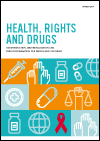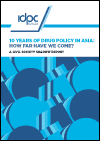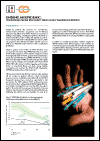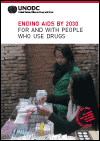Publications on People Who Inject Drugs (PWID)

The new UNAIDS report, Health, rights and drugs: harm reduction, decriminalization and zero discrimination for people who use drugs, shows that of the 10.6 million people who inject drugs in 2016, more than half were living with hepatitis C and one in eight were living with HIV. It outlines that ensuring that comprehensive harm reduction services are available—including needle–syringe programmes, drug dependence treatment and HIV testing and treatment—will kick-start progress on stopping new HIV infections among people who use drugs.

Countries in Asia implement some of the harshest drug policies in the world. As United Nations (UN) member states are set to meet in March 2019 to take stock of progress made since 2009 and delineate the next phase for global drug policy, ‘10 Years of Drug Policy in Asia: How Far Have We Come?’ evaluates the impacts of drug policies in Asia over the past decade from a civil society perspective.

The 2018 Global Overview outlines key trends across the at least 35 countries that retain the death penalty for drug offences in law, and analyses data on death sentences and executions from the last decade. Extensive examination is provided on the divergent trends witnessed in 2018 of falling execution numbers globally, and rising appeal for reimplementation of the death penalty in some countries, while considering the role public opinion plays in all of this.

Almost a decade ago, the international community agreed upon a Political Declaration and Plan of Action on International Cooperation towards an Integrated and Balanced Strategy to Counter the World Drug Problem. The Declaration included the decision to establish 2019 as the target date for the goals set within it, specifically for states to ‘eliminate or reduce significantly and measurably’ the illicit cultivation, production, trafficking and use of internationally controlled substances, the diversion of precursors and money laundering.

Nearly a quarter of the world’s new HCV infections occur among people who inject drugs (PWID): lack of access to sterile needles, syringes and other injection equipment renders them highly vulnerable to HCV. Legal and structural barriers also greatly increase HCV risk among PWID. Worldwide, more than 50% of the 15.6 million PWID are HCV antibody positive. Without urgent, strategic and measurable action that includes PWID, HCV will continue to inflict a staggering, and increasing, burden of preventable illness and death among families, communities and countries.










